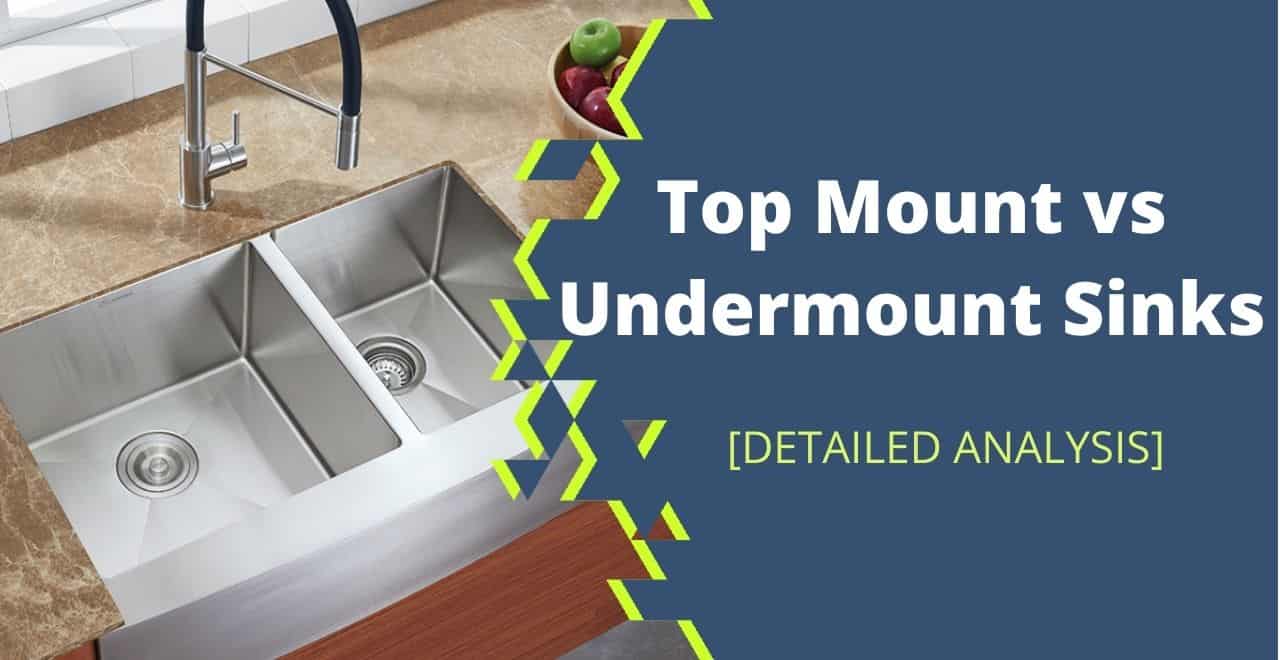Are you stuck between choosing the perfect sink material that is functional yet reflective of your kitchen or bathroom? It might not be easy deciding whether to buy a stainless steel sink that enhances contemporary-style homes or go for a fireclay farmhouse sink that complements country-style homes. However, is that the only distinction between them?
According to the NKBA Key Design trends report, stainless steel is almost twice as popular as composite and fireclay materials. But, fireclay is getting popular by the day.
In fact, an article suggesting the expected kitchen trends of 2021 noticed that while stainless steel continues to dominate kitchen sinks, fireclay follows close behind. Single bowls are likely to remain in vogue, but apron-front, or farmhouse, sinks are not far behind.
Although, as of now, you think stainless steel is your go-to, fireclay is also a reliable option. So, in this article, we will explore the key differences between fireclay and stainless steel based on durability, affordability, cleanliness, etc.
What Are Fireclay Sinks?
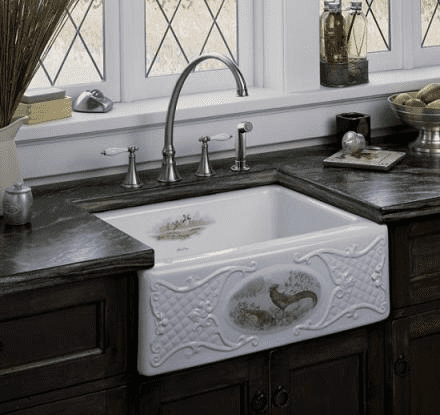
Fireclay sinks, a clay-glaze combination, are made of liquid ceramic. The fireclay sinks are then fired at extremely high temperatures (1600-2200°F) for 20 hours in a tunnel kiln. As a result, the sinks get exceptional durability.
A fireclay sink looks similar to enamel cast iron sinks, but it offers distinct advantages over cast iron. Fireclay resists both cleaners and scratches better than cast iron and porcelain, where abrasives can easily scratch.
Fireclay farmhouse sinks come in a crisp white and are perfect when you want to brighten up a kitchen with a gorgeous, eye-catching focal point. Apart from that, fireclay sinks also have some other pros and cons.
Pros
Easy to Clean and Maintain
With fireclay sinks, you might have to deal with staining, spotting, or scratching. Fortunately, maintenance and cleanup for fireclay sinks are still manageable with fireclay. Since it is a non-porous surface, stains have a hard time adhering to the sink.
You can use non-abrasive cleaners and a soft scrubbing pad for regular care and cleaning. If properly maintained, fireclay sinks will be more durable and last for a long time.
Bonus tip -Use of steel wool is off-limits for a fireclay sink.
Heat-Resistant
The firing process used to create a fireclay develops a naturally heat-resistant sink, meaning the sink surface will not be damaged even if you put hot pans, pots, plates, and other items into the sink.
Unique and Handcrafted
Even if mass-produced, fireclay sinks are handcrafted and have a unique design. Its handmade quality gives your kitchen a one-of-a-kind appeal. Hence, nowadays, these stylish, timeless pieces are not found in cottages or farmhouses but also in contemporary houses.
Durable and Long-Lasting
In the end, fireclay sinks prove to be highly durable kitchen fixtures thanks to a manufacturing process. Due to their scratch and chip resistance properties, you do not have to be extra cautious when washing heavy pots and sharp knives.
Although not extra careful -but careful enough. Because the bowl of the sink is deep, it can scratch, crack, or chip if you drop heavy items in the sink.
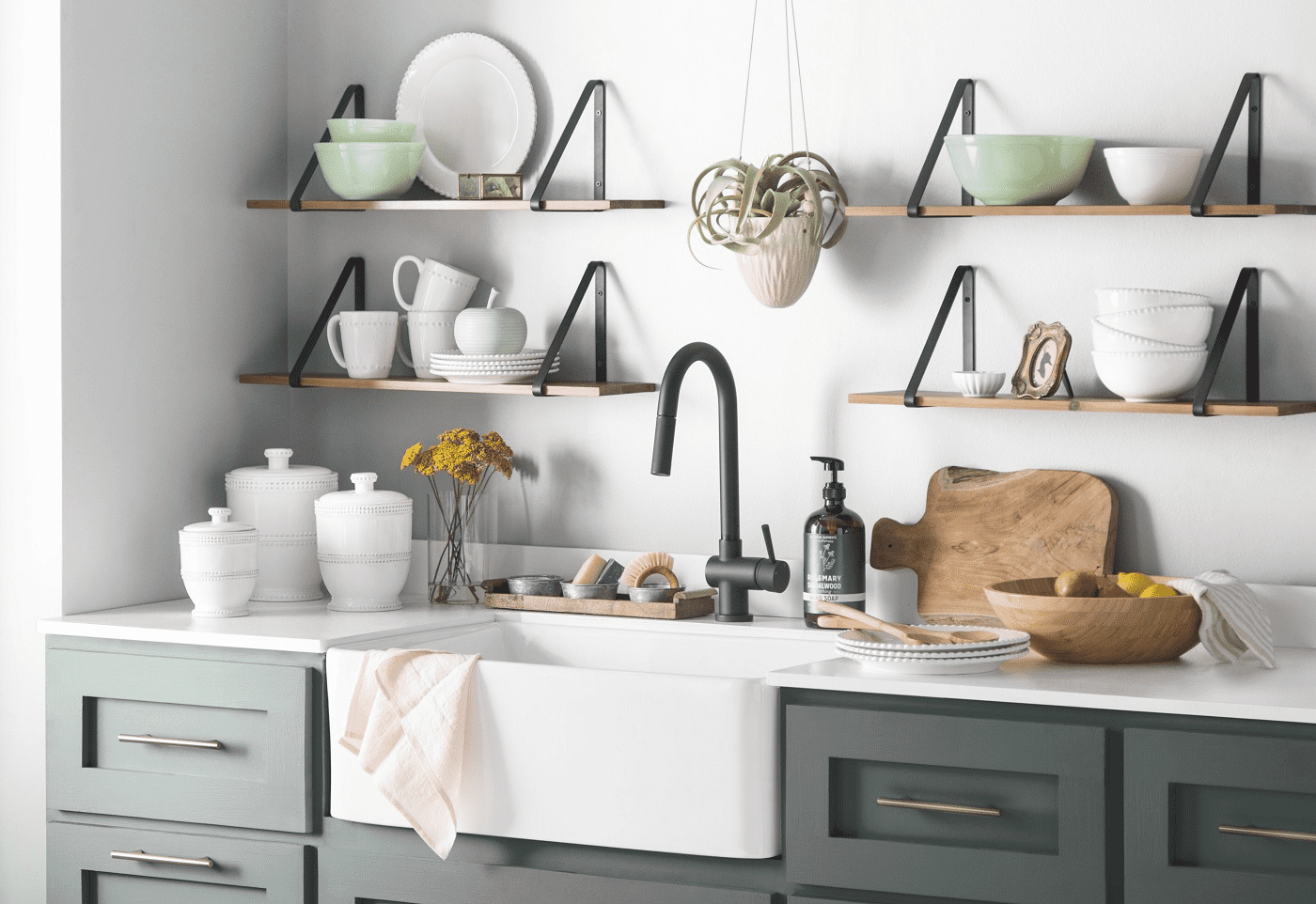
Cons
While there are pros, fireclay sinks also have some cons.
Susceptible to Cracks and Chips
Although the surface is incredibly tough and durable, resembling cast iron, fireclay sinks do not last as long as other materials. As a result, over time, the fireclay might chip or crack. Other than that, if you exert too much pressure or drop heavy items without being careful, the sink surface may chip or crack.
Difficult Installation
Because a fireclay sink is so heavy, most homeowners will need to install additional structural supports to their kitchen counters. As a result, the sink needs professional and high-precision installation.
Expensive
Firstly, the sink is expensive. Secondly, the professional help needed for installation and other additional steps becomes an additional expense. As a result, the cost of a fireclay increases higher than a stainless steel sink.
What Are Stainless Steel Sinks?
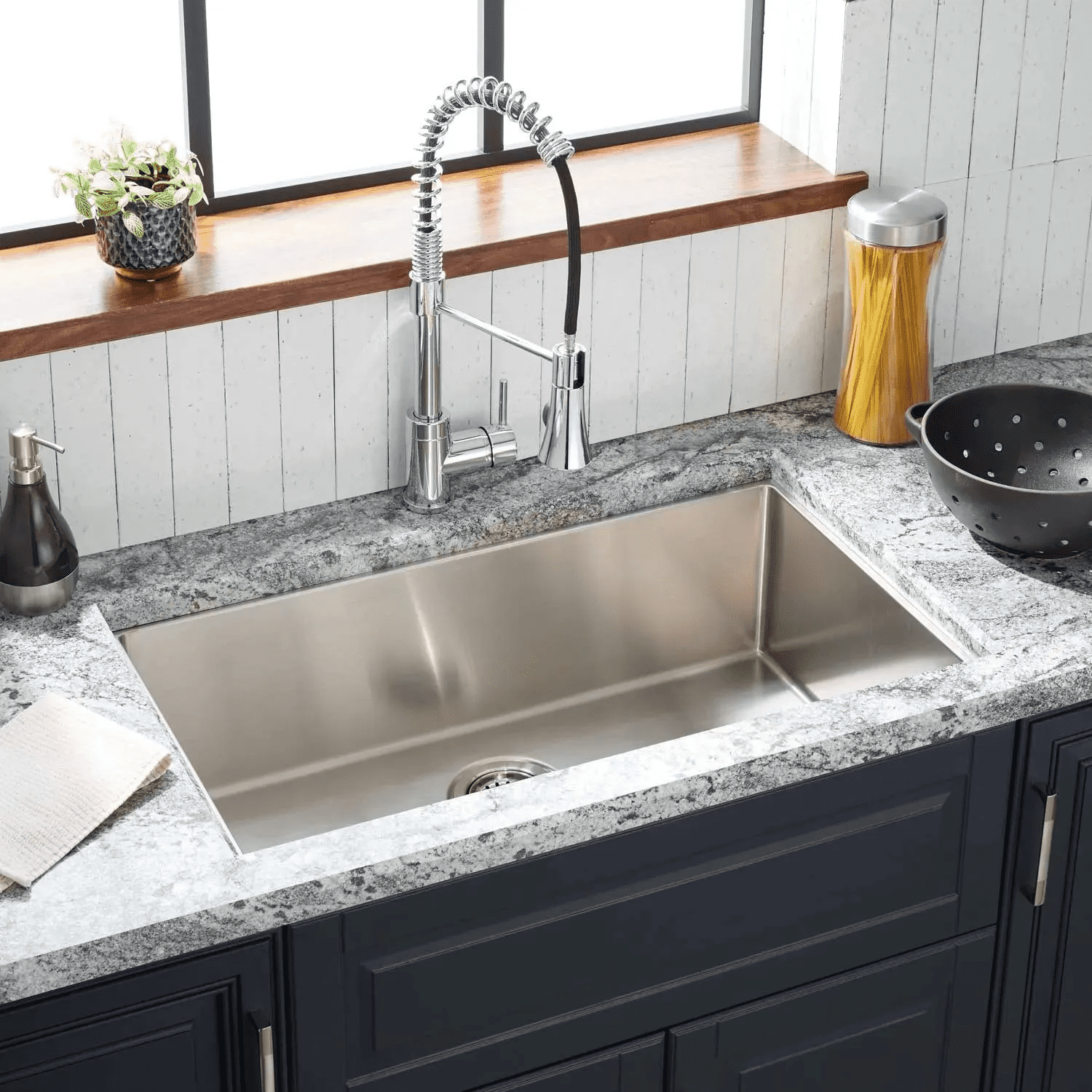
Stainless steel sinks are manufactured by molding steel until it is completely smooth. It is made by combined chromium and nickel. As a result, the sink is incredibly durable and can sustain in cold & hot temperatures.
In addition to it, stainless kitchen sink practically can bear heavy use and still last long. Most importantly, stainless steel oxidizes to form a protective coating that is constantly renewed and is non-corrosive. It is relatively easy to clean stainless steel sinks than granite, porcelain, or ceramic sink.
Bonus Read –Ceramic vs. Stainless Steel Sink [A Detailed Analysis]
Pros
Inexpensive and Value for Money
Sink made of stainless steel is an affordable yet practical than any other material for the kitchen vicinity. Even though most steel sinks vary in price based on the gauge number, meaning the thickness of the steel, they will last a lifetime.
Highly Durable
Even if the stainless steel is prone to denting, high-quality steel does not dent easily and has high durability. Over the years, steel sinks have proven to take hard scrubbers, heavy dishes, and cleaners. Plus, they don’t even rust or corrode and shine through for years to come.
Easiest to Clean
The surface of the stainless kitchen sink is hygienic since it prevents unwanted germs from accumulating. It has a non-porous and stain-resistant surface that is simpler to clean and maintain than any other sink material.
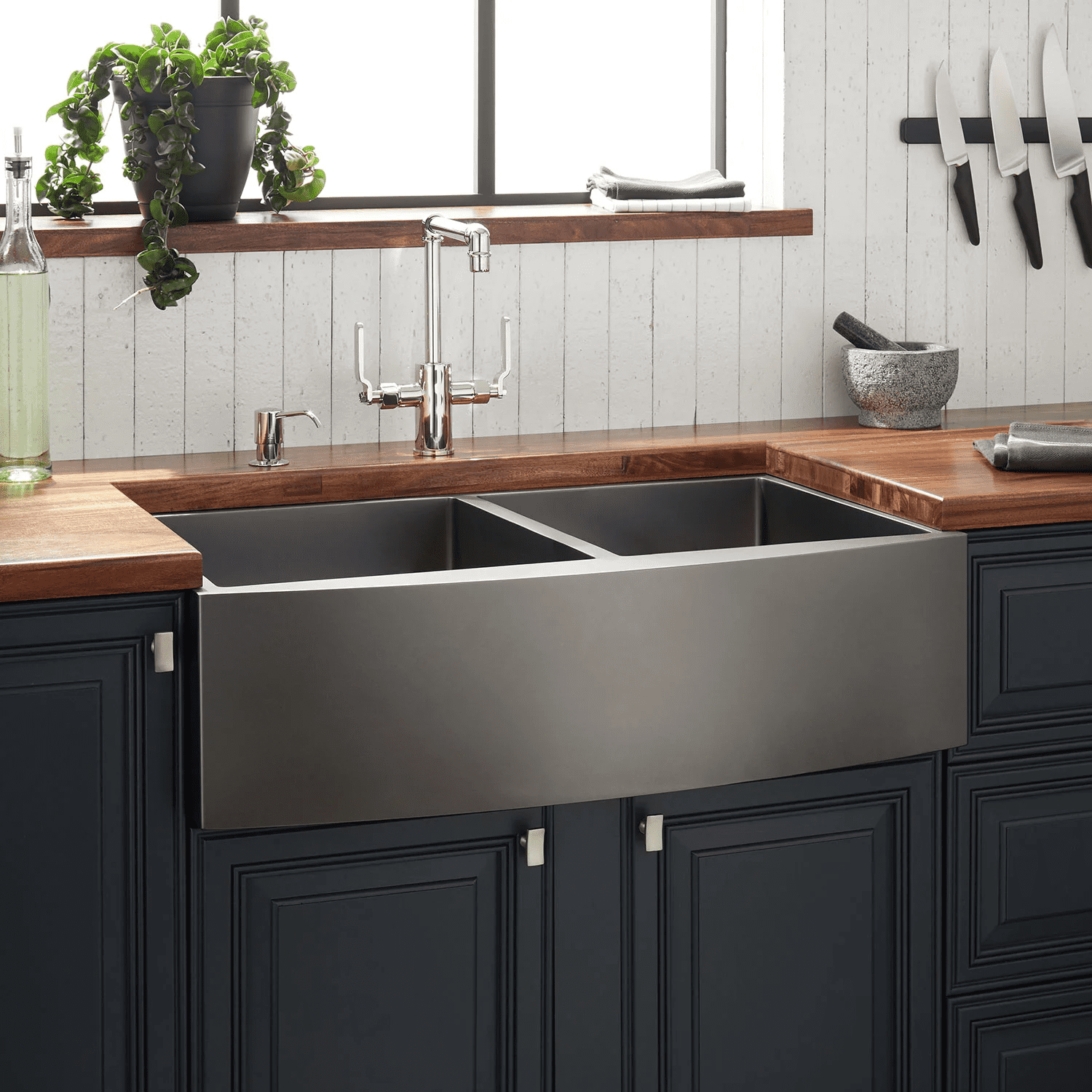
Cons
Prone to Scratching or Denting
Kitchen sinks made of stainless steel do not chip or crack but are more likely to dent and scratch. In addition to that, they are also prone to developing limescale deposits and hard-water stains.
For stainless steel kitchen sinks, always ask for 16-18 gauge steel. They are not easily dented, unlike 20 gauge steel.
Noise and Vibrations
Perhaps not the quietest of the sinks. Along with the noise from washing and cleaning vessels, you can hear the running water and even the vibrations caused by the utensils. Hence, noise and vibrations are some of the setbacks of stainless steel sinks.
Limited Range of Options
While stainless steel sinks come in many sizes and shapes, they do not have color options. They are available in different bowl styles, yet a stainless steel sink will always be -stainless steel.
7 Major Differences Between Fireclay and Stainless Steel Sinks
Now that we know the pros and cons of both fireclay and stainless steel, it is clear that both of them are durable, functional, affordable, and offer a lovely appearance.
But, if they both are such durable materials, what is the difference between them? These are seven key points of contrast between both the kitchen sink materials.
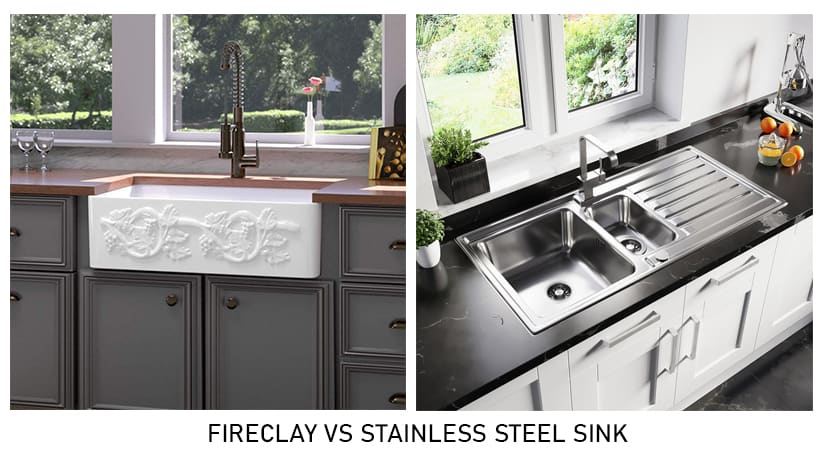
Sink Style
The first and foremost difference that persists between the two is sink style. We see more fireclay sinks in rustic, traditional country-style, vintage houses. Modern and contemporary-styled homes often have stainless steel sinks instead.
Today, both materials have made their way into traditional and modern homes. Fireclay sinks come in drop-in, undermount, but are often in a farmhouse or apron-front sink style. Moreover, the sinks come in both single-bowl and double-bowl options.
Instead, stainless steel is observed to be more top-mounted or under-mounted sink style. But, they do come in farmhouse or apron-front style. Also, they are available in single-, double-, triple-bowl sink types.
Although nowadays, we can see both the materials blend with traditional and contemporary style houses.
Review -Today, we can observe that both the materials perfectly blend with any home and kitchen decor and add beauty to your home.
Resistance
Resistance to cracks, scratches, and dents becomes a crucial factor while deciding between the two.
Scratches, dents, and chips
As mentioned, fireclay sinks are a type of ceramic and are more likely to be chipped, scratched, and even cracked. For instance, due to the depth of a fireclay farmhouse sink, if you accidentally drop heavy items into the sink, there are chances of chipping and scratching.
On the contrary, stainless steel sinks are resistant to cracks and scratches. Even if scratched, it can be removed with simple household methods. Being a molded metal, it becomes resilient to cracking. Steel can dent, which is its biggest weakness. Unlike steel, fireclay sinks do not dent.
Review –Fireclay sinks are more likely to get scratched, cracked, and even chipped, whereas stainless steel is prone to dents and resilient to cracks and chips.
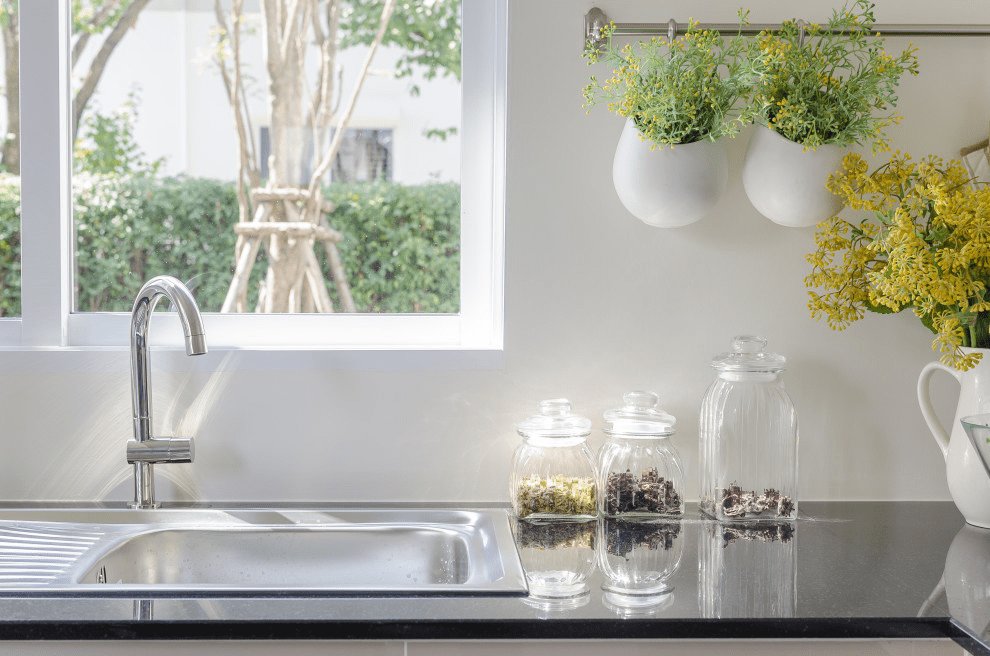
Cost
Another contrasting feature between fireclay and stainless steel is cost. On average, the cost of fireclay sinks begins at $500 and goes up to $1500, excluding the installation and other expenses. Plus, the price may vary based on quality, brand, and sink style. Even then, fireclay sinks are expensive than stainless steel.
For stainless steel sinks, it starts at around $50 but can go upwards of $1,000 depending on the brand, the material, and the quality. In the case of stainless steel, the gauge of the steel affects the price.
Review -Stainless steel, without a doubt, wins this argument. Fireclay sinks are expensive than stainless steel with or without additional expenses.
Care and Maintenance
Cleaning and maintaining both fireclay and stainless steel is easy. The stain-resistant surface of both materials makes it comparatively easy to clean.
The only difference is that fireclay sinks should not be treated with harsh chemicals or acids. Besides, to clean and keep your fireclay sink as new as ever, you only have to regularly clean using everyday dishwashing soap and soft, wet cloth.
For stainless steel, all you need is soap and water. Rinse it off regularly with a clean cloth and soapy water, and you will have a shining sink at all times. The use of bleach or acid cleaners is off-limits for stainless steel.
Review -Cleaning and maintaining fireclay and stainless steel is easy. However, stainless steel sinks are the easiest to clean compared to any other materials.
Weight
Concerning the weight, fireclay sinks are heavier than stainless steel. Fireclay sinks require a cabinet with an open front and an exposed apron front to support their depth. It will keep up the weight of the sink, water filled to the top, with any attachments such as garbage disposals.
The heavyweight also means that replacing fireclay sinks is tricky and challenging.
Review –If you don’t have a strong countertop material, choose stainless steel because fireclay is quite heavy than stainless steel.
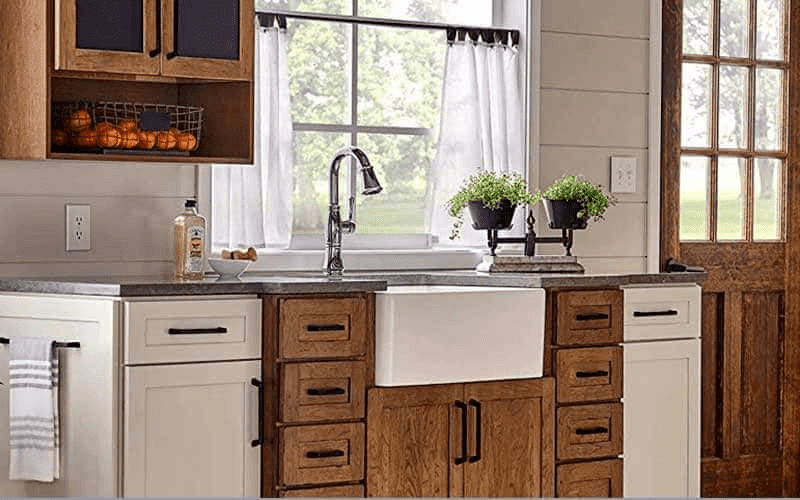
Noise
Unlike stainless steel, fireclay sinks are constructed of clay, and hence, they are more sound-absorbent than other sink materials.
A stainless steel sink, however, is not soundproof. Some of the reasons that make steel noisy are a constant flow of water, dropping items in the sink, which can be annoying at times.
Review -If you don’t want noise in your kitchen or do your dishes late at night, go for a fireclay sink and not stainless steel.
Endurance
The endurance of the sink depends on the care and maintaining of the sink. If properly maintained, fireclay sinks can last over 20 years. And stainless steel sinks have a lifespan of 15-20 years or more.
Review -Both the materials have a great lifespan. They have great endurance than other sink materials.
Quick overview
| Fireclay sinks | Stainless steel sinks | |
| Perfect for any kitchen | ✔ | ✔ |
| Resistance to cracks and chips | ✘ | ✔ |
| Resistance to dents | ✔ | ✘ |
| Expensive | ✔ | ✘ |
| Easy to clean | ✔ | ✔ |
| Durability | ✔ | ✔ |
| Heavy and needs support | ✔ | ✘ |
| Easy installation | ✘ | ✔ |
| Noisy | ✘ | ✔ |
| Endurance | ✔ | ✔ |
Verdict
After going through the differences, you might at least have a rough idea about which sink fits your house the best. Every homeowner has different preferences. Some people seek a low-budget yet functional sink, while others seek sinks having unique and distinctive features regardless of the price.
Fireclay and stainless steel sink both offer distinctive and functional features. In the end, It all boils down to what you value and prefer.
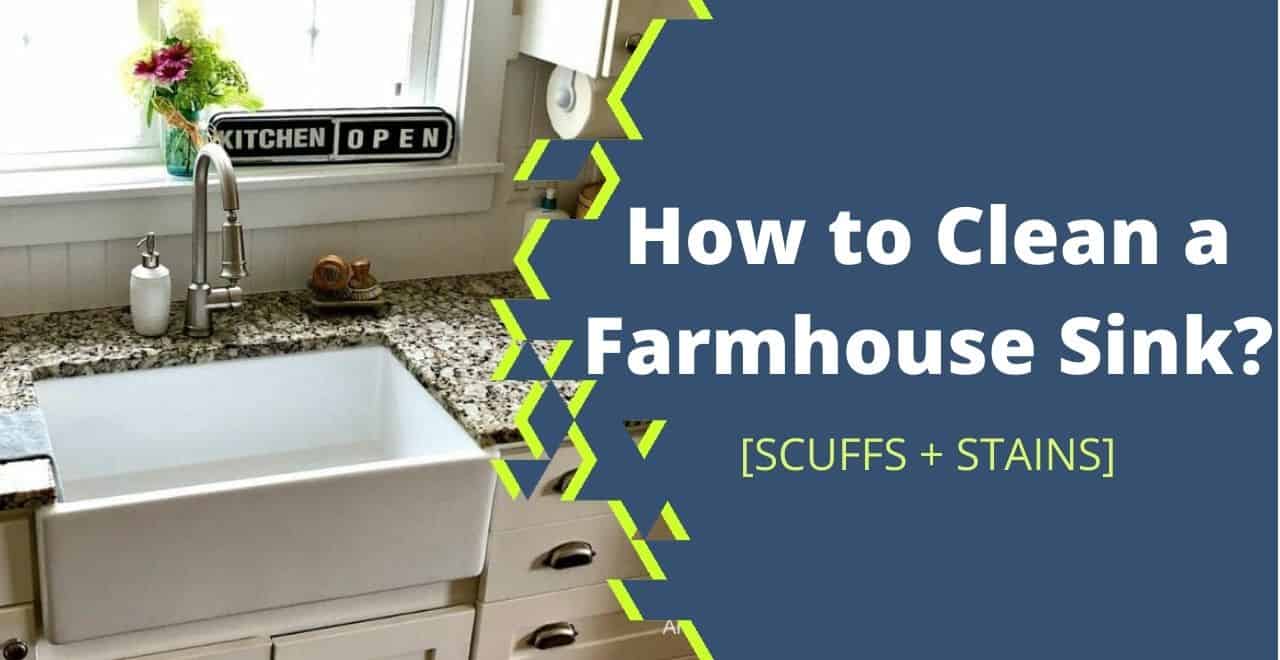
![What Are Kitchen Sinks Made Of ? [13 Types+Pros & Cons] What Are Kitchen Sinks Made Of ? [13 Types+Pros & Cons]](https://houseadorable.com/wp-content/uploads/2022/01/Sink-MAterial.jpg)
![Ceramic vs Stainless Steel Sink [A Detailed Analysis] Ceramic vs Stainless Steel Sink [A Detailed Analysis]](https://houseadorable.com/wp-content/uploads/2021/12/Ceramic-vs-ss.jpg)
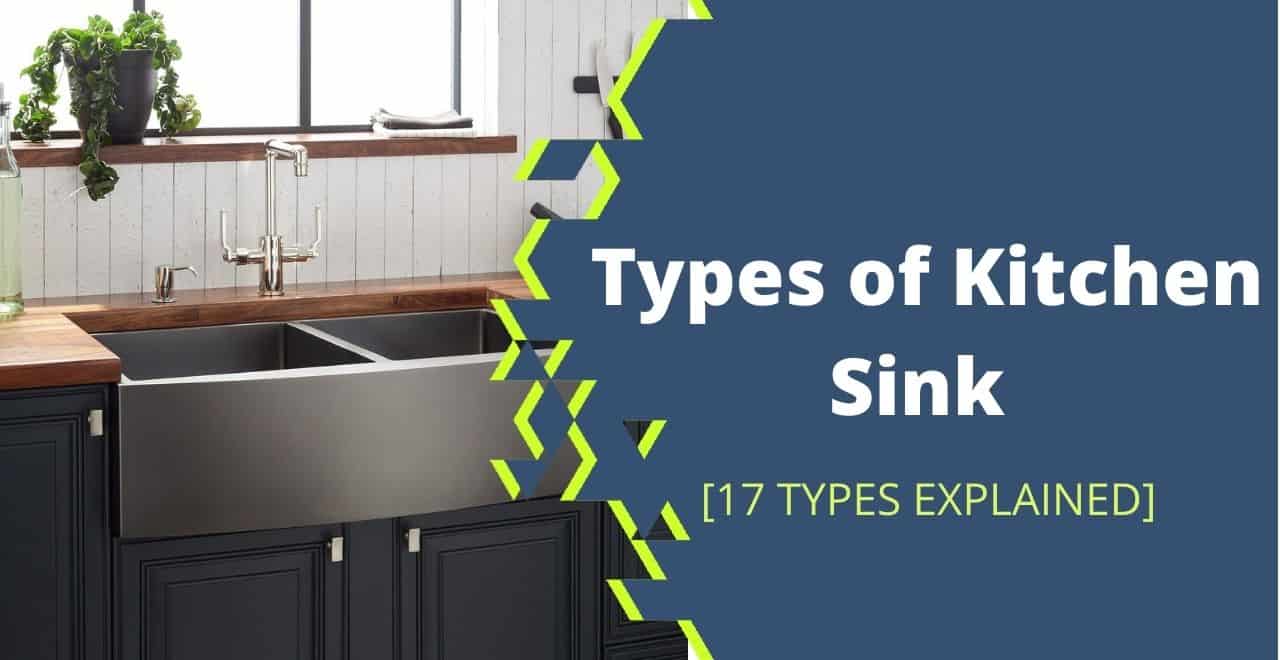
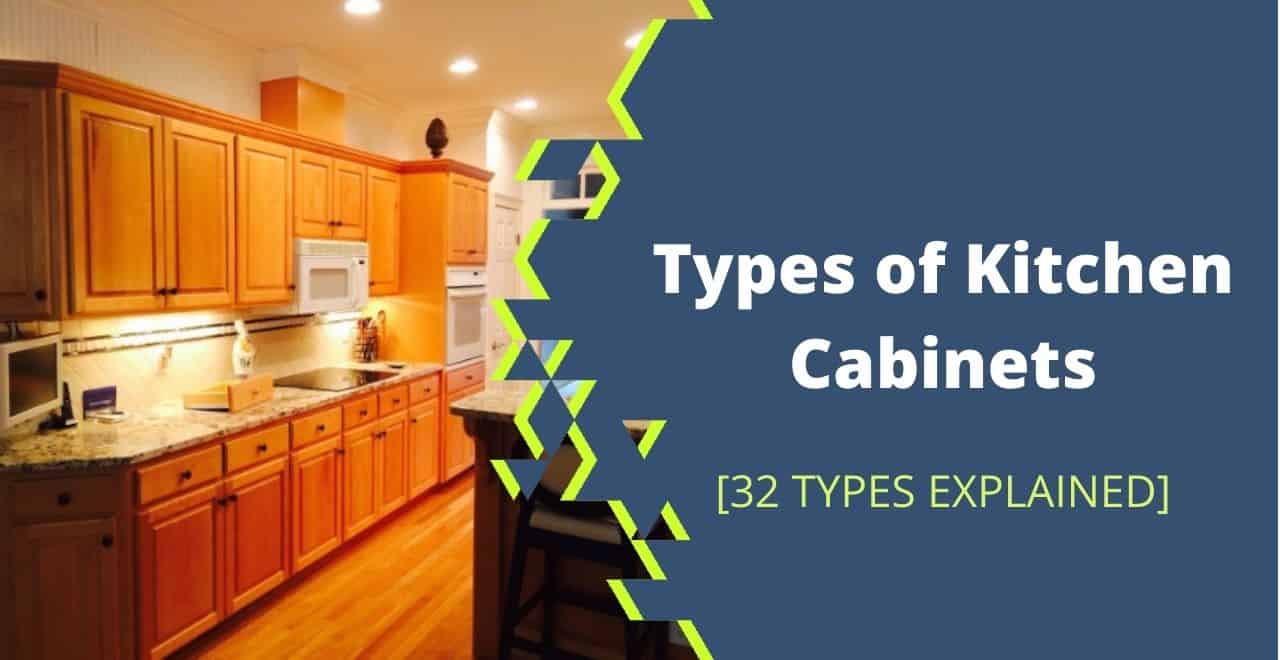
![How to Clean a Composite Sink? [Stain & Scuff+Routine Cleaning] How to Clean a Composite Sink? [Stain & Scuff+Routine Cleaning]](https://houseadorable.com/wp-content/uploads/2022/01/clean-composite-sink.jpg)
![Granite Vs. Marble Vs. Quartz Countertops [12 Differences+Pros & Cons] Granite Vs. Marble Vs. Quartz Countertops [12 Differences+Pros & Cons]](https://houseadorable.com/wp-content/uploads/2022/03/quartz-marble.jpg)
